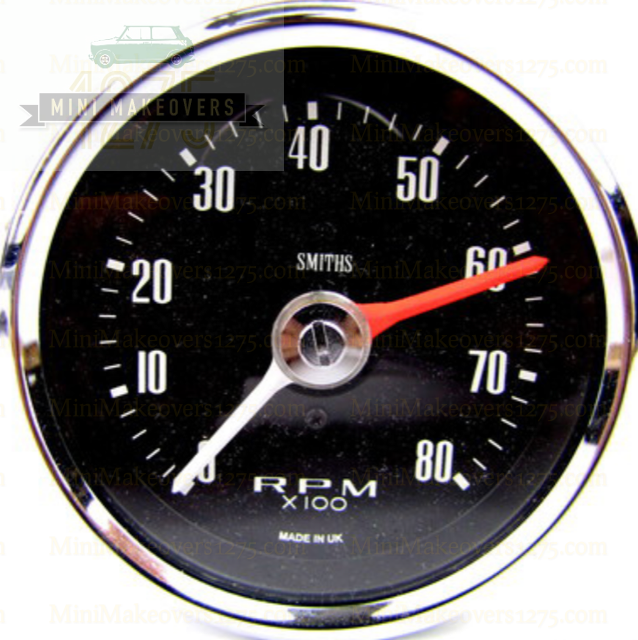Exactly How a Tachometer Helps Screen Engine Wellness and Performance
Wiki Article
The Importance of a Tachometer in Keeping Track Of Engine Speed and Efficiency in Automotive Applications
In the world of vehicle engineering, the tachometer stands as an essential instrument in the chauffeur's arsenal, providing a direct home window right into the internal workings of a car's engine. Past its feature as a plain scale of changes per minute (RPM), the tachometer offers as a vital tool for fanatics and specialists alike, offering real-time insights right into engine efficiency and health and wellness.Importance of Monitoring Engine RPM
Monitoring engine RPM, or transformations per min, is a vital facet of vehicle upkeep and efficiency assessment. Engine RPM directly correlates with the speed at which the engine's crankshaft revolves, showing how swiftly the engine is running - tachometer. By keeping an eye on RPM, mechanics can analyze the health and wellness of the engine, find possible issues, and fine-tune efficiency. An irregular RPM analysis may signal troubles such as engine misfires, damaged ignition system, or concerns with the gas delivery system. Constantly high RPM analyses can show hostile driving behaviors or the requirement for a higher gear change to enhance fuel effectiveness.Moreover, keeping an eye on engine RPM is vital for efficiency examination in auto racing and high-performance cars. In recap, checking engine RPM is not only vital for detecting concerns but additionally for optimizing engine performance in different automobile applications.

Benefits of Real-Time Data
In automotive applications, real-time data plays an important role in supplying instantaneous insights into the efficiency and condition of the automobile. By constantly keeping an eye on different parameters such as engine rate, temperature, fuel usage, and extra, real-time data offers many advantages that add to improved performance and security when traveling.
Additionally, real-time information assists in performance optimization by providing immediate comments on driving behaviors and engine efficiency. Drivers can adjust their actions in real-time based on this information to achieve better fuel economic situation and extend the life-span of their lorry.

Additionally, real-time data plays a crucial function in modern automotive diagnostics, allowing professionals to promptly identify and deal with breakdowns. This brings about decreased downtime, reduced upkeep costs, and ultimately, improved general vehicle reliability and longevity (tachometer). By taking advantage of the power of real-time data, automotive stakeholders can make educated choices that favorably affect both the performance and long life of the vehicle
Impact on Equipment Shifts
The tachometer plays a crucial duty in enhancing equipment shifts by giving real-time engine rate data to the motorist. When approaching the redline on the tachometer, it signals the chauffeur to upshift to stop over-revving the engine and creating prospective damages.Additionally, the tachometer help in achieving smoother equipment changes, especially in hands-on transmissions. By checking engine speed, chauffeurs can implement equipment changes at the ideal RPM range, lowering snagging motions and minimizing endure the transmission components. This accuracy in gear adjustments not just enhances driving comfort however likewise adds to fuel performance.
Enhancing Fuel Performance
Given the crucial function the tachometer plays in enhancing equipment shifts for efficiency and engine health, it straight adds to optimizing fuel effectiveness in auto applications. By supplying real-time comments on engine rate, the tachometer check it out assists vehicle drivers in preserving one of the most efficient RPM array for gas economic situation. When motorists continually keep track of the tachometer and adjust their motoring routines accordingly, they can prevent unnecessary fuel intake triggered by over-revving or lugging the engine.Additionally, the tachometer assists chauffeurs identify the most fuel-efficient equipment to be in at any type of given minute, protecting against the engine from functioning harder than required. In verdict, the tachometer offers as a beneficial tool in boosting gas effectiveness by promoting ideal driving practices and recognizing areas for improvement in the car's efficiency.

Making The Most Of Engine Long Life
The tachometer's function in keeping track of engine speed and efficiency contributes in making sure the long life of auto engines. By making use of the tachometer efficiently, drivers can maximize engine long life through conscious RPM monitoring. Consistently revving an engine as well high can lead to extreme damage on essential parts, such as the this link pistons, shutoffs, and bearings. With time, this can cause decreased engine performance and potential malfunctions. Keeping an eye on the tachometer enables chauffeurs to remain within the recommended RPM array for their automobile, avoiding unneeded strain on the engine and expanding its life expectancy.
Conclusion
Finally, the tachometer plays a crucial role in monitoring engine speed and performance in automobile applications. By offering real-time data on RPM, it enables reliable gear shifts, enhanced gas effectiveness, and taken full advantage of engine durability. This device is important for preserving ideal engine efficiency and guaranteeing the general functionality of a car.Report this wiki page